Florence, or Firenze, often called the “Cradle of the Renaissance,” is a city in central Italy that needs no introduction. Located in Tuscany, Florence is famous for its stunning art and architecture, including masterpieces like Michelangelo’s David and the breathtaking Florence Cathedral. Known for its beauty, history, and culture, it draws millions of visitors annually. If you’re looking for the best areas to stay in Florence, you’ve come to the right place.
Accommodation Options in Florence
Founded as a Roman military colony around 59 BC, Florence grew into a flourishing center of medieval European trade and finance. Its history is closely tied to significant landmarks such as the Uffizi Gallery, which houses an unparalleled collection of Renaissance art, and the Palazzo Vecchio, a symbol of Florence’s political history. The city’s thriving tourist industry means you can choose from luxury hotels with breathtaking views to budget properties filled with charm.
Beyond its main attractions, Florence offers other gems worth exploring. The Boboli Gardens provide a peaceful escape with their meticulously landscaped grounds. The Ponte Vecchio is not just a bridge but also a bustling marketplace over the Arno River. Santa Croce Basilica is another must-see for art lovers, boasting frescoes by Giotto. Lastly, don’t miss out on Mercato Centrale if you’re a food enthusiast; it’s a great spot to sample local Florentine delicacies.
Florence’s atmosphere wraps you in its charm from your first step on its cobblestone streets. Known for being very tourist-friendly, it’s a place where historic buildings stand next to stylish shops and lively cafes. The bustling vibe during the day transitions smoothly into an intimate evening setting, perfect for romantic dinners or casual night-outs.
Keep reading this guide to learn more about this fascinating city and the best areas to stay in Florence, which will make your visit truly memorable.
What’s the Best Area to Stay in Florence?
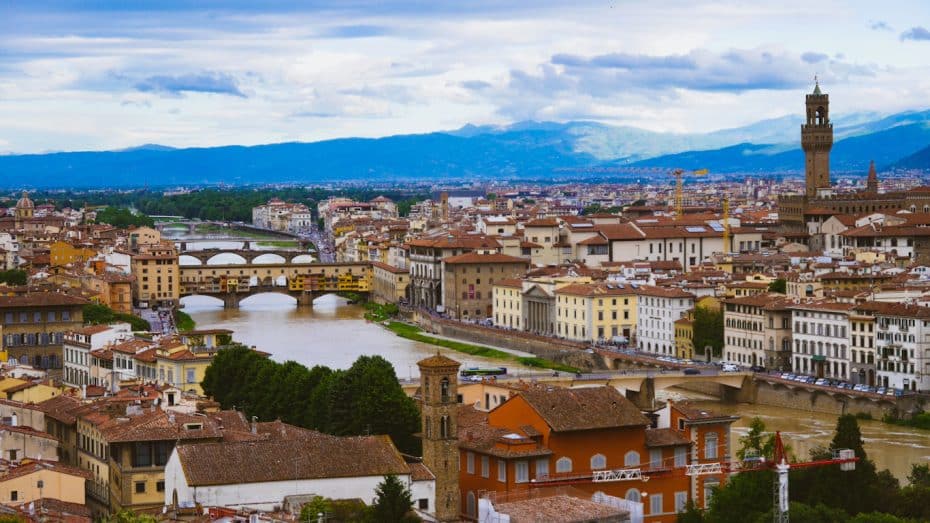
The best area to stay in Florence is Centro Storico due to its unparalleled access to iconic landmarks such as the Duomo, Uffizi Gallery, and Ponte Vecchio. Its compact layout makes it easy to explore on foot, and its vibrant atmosphere ensures that there is always something to do. Staying in Centro Storico allows you to fully experience the charm of Florence’s cultural and artistic heritage.
Find available accommodation in Centro Storico di Firenze.
Best Hotels in Centro Storico, Florence
- Best five-star hotel: Hotel La Gemma
- Best four-star hotel: Hotel Spadai
- Best three-star hotel: 4F Boutique Hotel Florence
- Best budget hotel: Hotel Delle Camelie
- Best B&B: Palazzo della Stufa Residenza D’Epoca
- Best serviced apartments: Kairos by Florence Art Apartments
- Best hostel: Ostello Bello Firenze
Where to Stay in Florence for Sightseeing
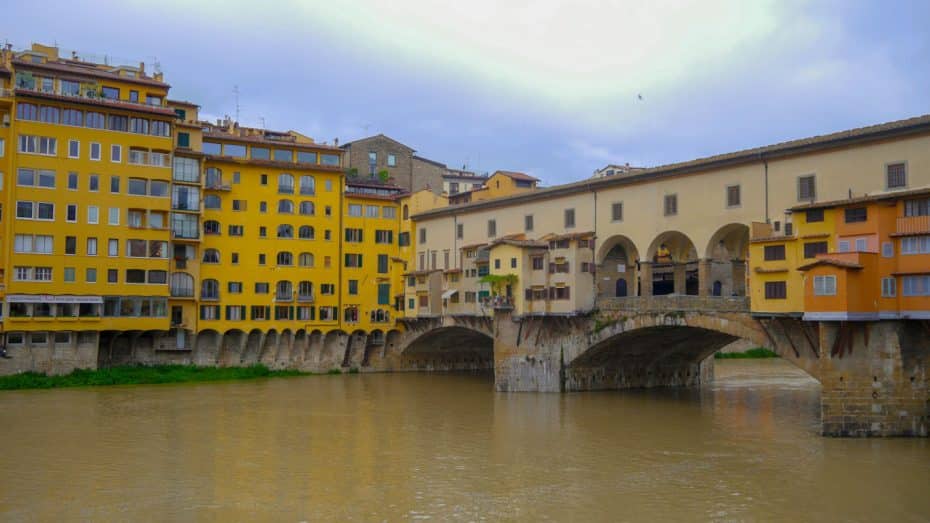
As mentioned above, Centro Storico is the best location for tourists to the Italian city. That said, central Florence is a large area, and its many quarters offer different vibes and sights. These are some of the best districts to stay in Firenze:
- Centro Storico is Florence’s historical center, known for its narrow streets, renaissance architecture, and iconic landmarks such as the Duomo, Uffizi Gallery, and Ponte Vecchio. Staying here puts everything within easy walking distance.
- Santa Maria Novella Railway Station is ideal for those relying on public transport. This area offers a range of accommodations and convenient access to other parts of Florence and beyond.
- Piazzale Michelangelo offers panoramic views of the city and scenic landscapes.
- Santo Spirito is known for its vibrant nightlife and artisan workshops. This bohemian area offers local culture and nightlife.
- San Lorenzo is famous for its bustling markets and the Medici Chapels. It offers a lively environment and proximity to several major attractions.
- Santa Croce is recognized for its stunning basilica and busy piazza. This area provides cultural spots and many dining options.
- San Marco & Santissima Annunziata features several museums, including the Accademia Gallery, which houses Michelangelo’s David.
- Campo di Marte is primarily a residential neighborhood located northeast of the city center.
The Best Areas to Stay in Florence: Best Quarters
1. Centro Storico
The best area to stay in Florence OVERALL
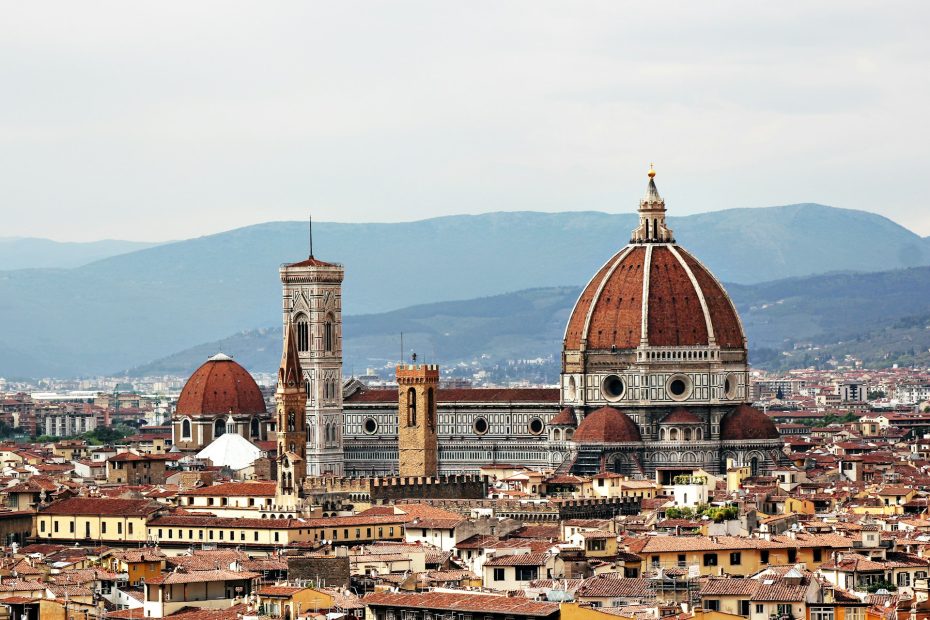
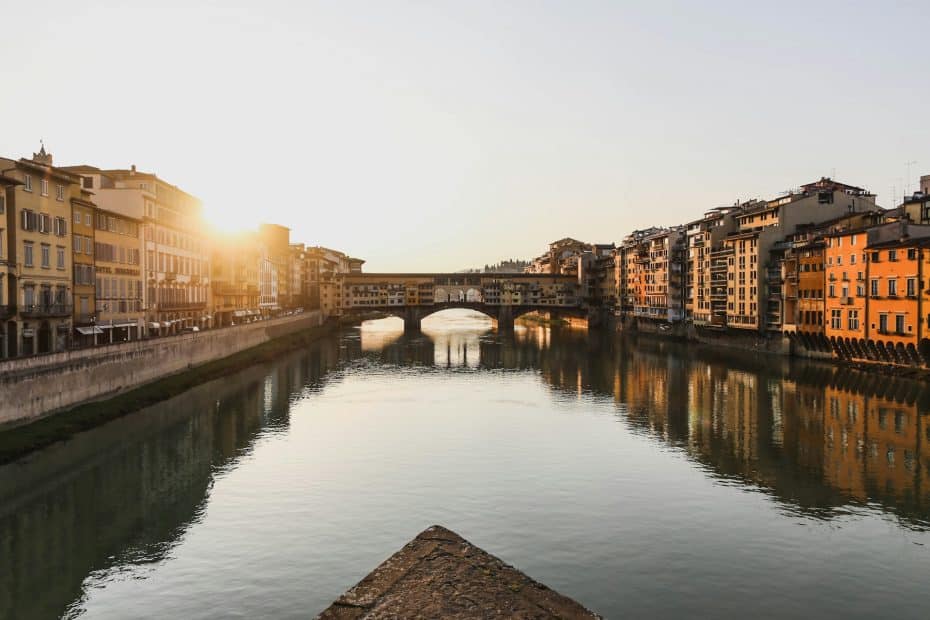
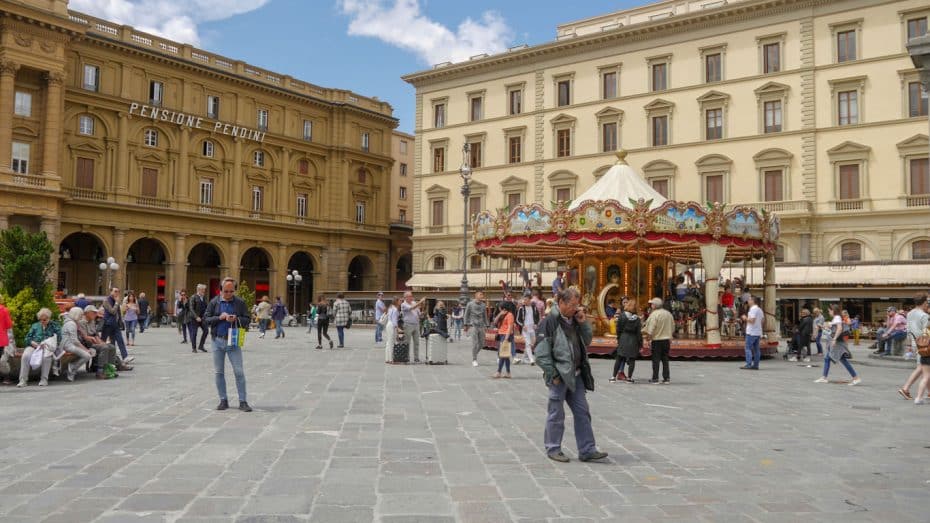
Centro Storico is ideal for those wanting to be in the middle of Florence’s historical landmarks and bustling streets. It’s home to iconic sites like the Duomo, Uffizi Gallery, and Ponte Vecchio.
-
Why is this the best area to stay in Firenze:
- Heart of Florence
- Rich historical sites
- Iconic landmarks
- Vibrant nightlife
- Delicious eateries
- High-end boutiques
- Stunning architecture
- Art galleries
- Cozy cafes
- Local markets
- Duomo di Firenze
- Cultural events
Centro Storico, or the Historic Center of Florence, stands as a must-visit district for anyone interested in exploring the cultural and historical roots of the city. This area serves as a literal living museum, showcasing relics from different eras dating back to the Renaissance and beyond.
One of the main attractions in Centro Storico is the Cathedral of Santa Maria del Fiore. Commonly known as Il Duomo, its construction began in 1296 and concluded in 1436 with the completion of its majestic dome designed by Filippo Brunelleschi. Adjacent to the cathedral is the Baptistery of San Giovanni, famous for its bronze doors crafted by Lorenzo Ghiberti.
Another highlight is Piazza della Signoria, a rectangular square that has been the political heart of Florence since medieval times. Here lies Palazzo Vecchio, a massive Romanesque fortress-palace that has been Florentine government’s seat since its construction in 1299.
Art aficionados will find Centro Storico particularly enticing, thanks to the Uffizi Gallery, home to an expansive collection of Renaissance art, including works by Botticelli, da Vinci, and Michelangelo. Another unmissable institution is the Accademia Gallery, which is best known for housing Michelangelo’s David sculpture.
Beyond its historical landmarks, Centro Storico is flush with museums such as the Galileo Museum, showcasing scientific instruments from Galileo’s era. Giotto’s Bell Tower, one of Italy’s finest examples of Gothic architecture, also offers panoramic views over Florence for those willing to climb its 414 steps.
The social buzz never dies down in Centro Storico. By nightfall, many bars and cafes open their doors along cobblestone streets. Particularly around Piazza della Repubblica and surrounding areas, visitors will find everything from traditional Tuscan trattorias to modern venues.
Despite being part of a medieval city characterized by narrow pedestrian streets, Centro Storico has many transportation options. Florence’s main train station, Santa Maria Novella (SMN), lies just outside its limits. It offers connections to major Italian cities, including Rome, Milan, and Venice, through high-speed trains such as Frecciarossa and Italo. Buses operated by ATAF traverse Centro Storico with stops at Piazza San Marco and Piazza della Repubblica.
Accommodation options in Centro Storico vary widely from historic hotels housed in Renaissance-era buildings to boutique accommodations offering modern amenities while retaining classical features.
Best Hotels in Centro Storico, Florence
2. Santa Maria Novella Railway Station
The best-connected area to stay in Florence
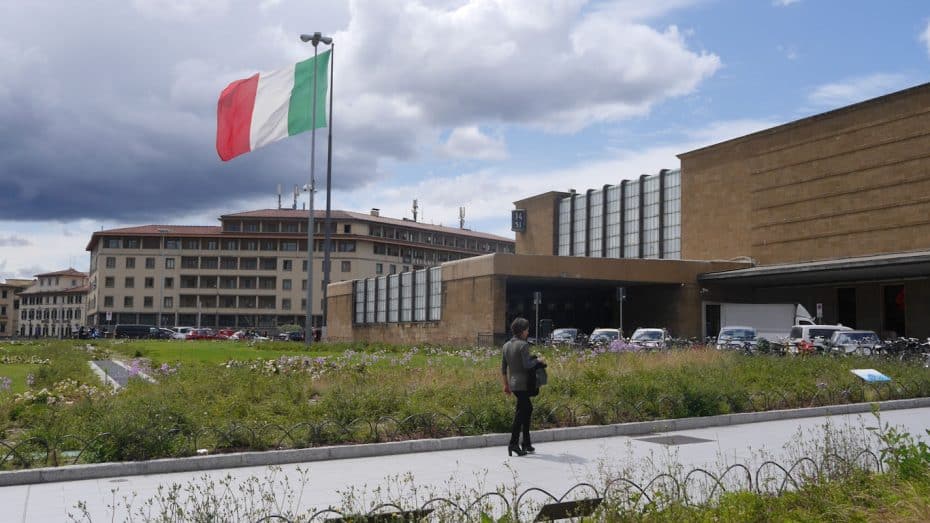

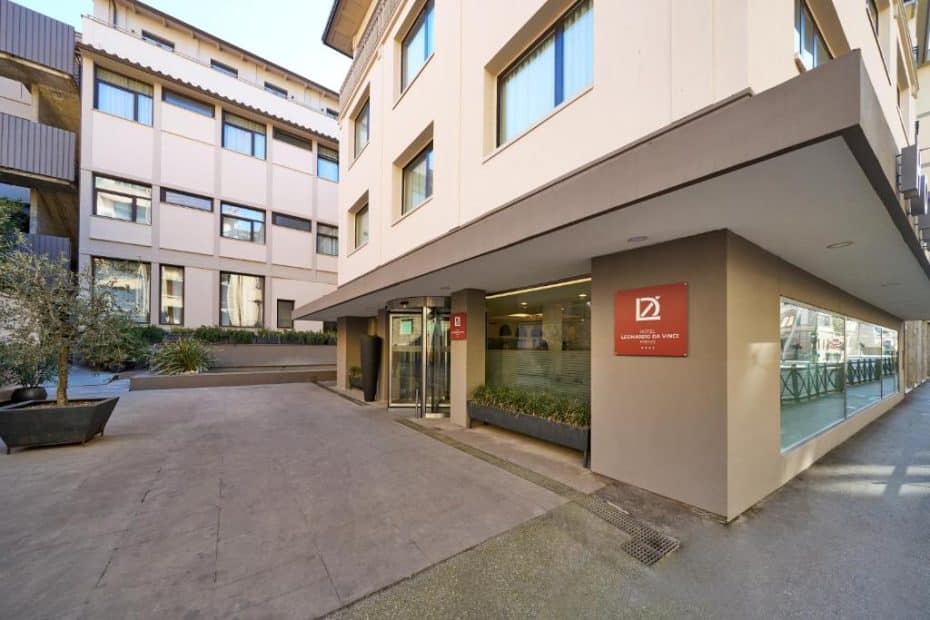
Staying around Santa Maria Novella Railway Station is a practical area for those planning day trips to other cities or locations in Tuscany.
-
Why is this the best area to stay in Firenze:
- Central location
- Close to the main train station
- Santa Maria Novella Church
- Plenty of shopping options
- Vibrant nightlife
- Wide range of dining choices
- Historic architecture
- Bustling markets
Located in Florence’s northwestern quadrant, Santa Maria Novella is a district brimming with historical and cultural significance. It is named after one of the city’s prominent churches, Santa Maria Novella. The church, with its striking façade designed by Leon Battista Alberti, was completed in the 14th century and remains an important Gothic landmark.
One of the most notable aspects of Santa Maria Novella is its major transport hub, the Firenze Santa Maria Novella railway station. Opened in 1935, this station is an essential node in the Italian rail network, linking Florence to major cities like Rome, Milan, and Venice. Public transit options are plentiful, with local bus lines crisscrossing the area, making exploring the wider city convenient.
The district also hosts several noteworthy attractions beyond its eponymous church. The adjacent Piazza di Santa Maria Novella is often used for public events and gatherings. Close by, the Museo Novecento is dedicated to 20th-century Italian art.
Santa Maria Novella is known for its atmospheric streets lined with traditional Tuscan architecture. Boutiques, artisanal shops, and historic pharmacies populate these streets; the Officina Profumo-Farmaceutica di Santa Maria Novella is particularly famous. Operating since 1221, it offers a glimpse into centuries-old apothecary traditions and sells quality perfumes.
Nightlife in Santa Maria Novella is understated compared to other parts of Florence and includes wine bars and cafes. A notable spot is Caffè Gilli on Via Roma, which dates back to 1733 and serves a range of pastries and Florentine dishes.
Regarding accommodation, Santa Maria Novella offers everything from luxury hotels housed in former palaces to more budget-friendly options.
Best Hotels in Santa Maria Novella, Florence
3. Piazzale Michelangelo
best views of Florence city center
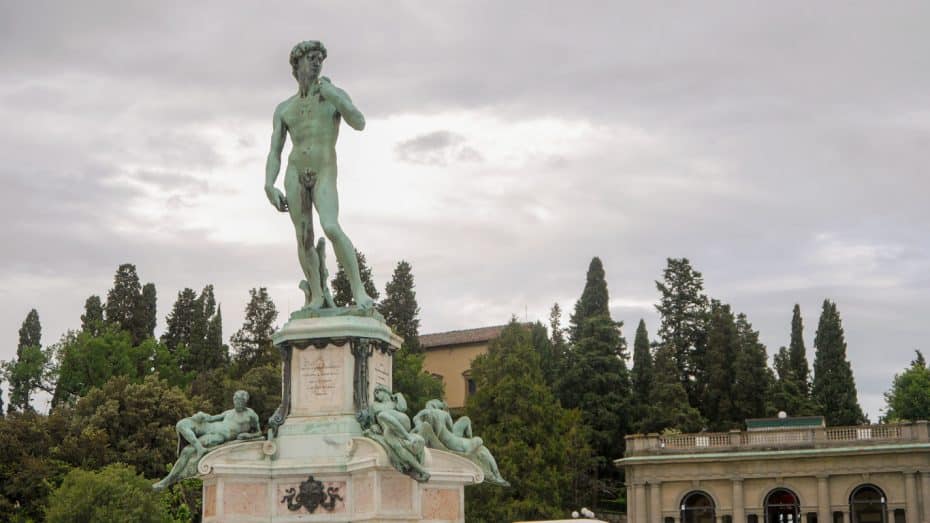
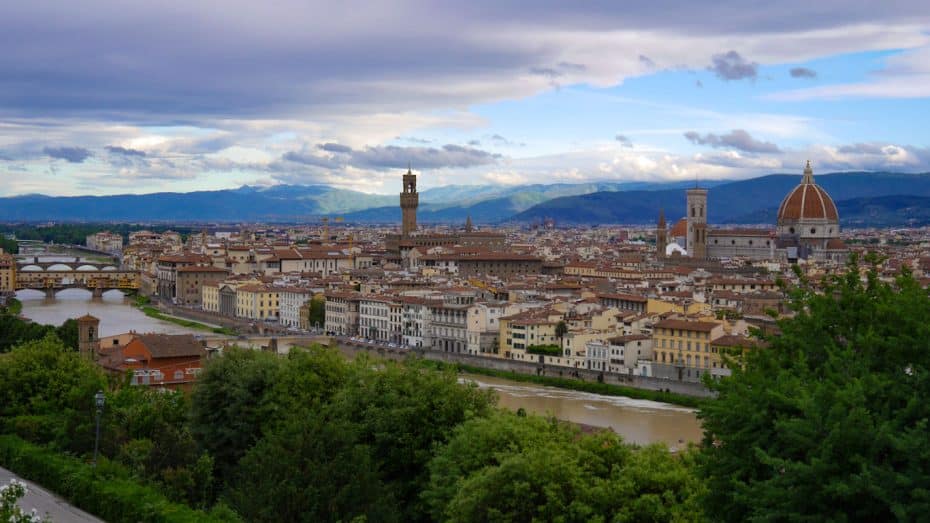
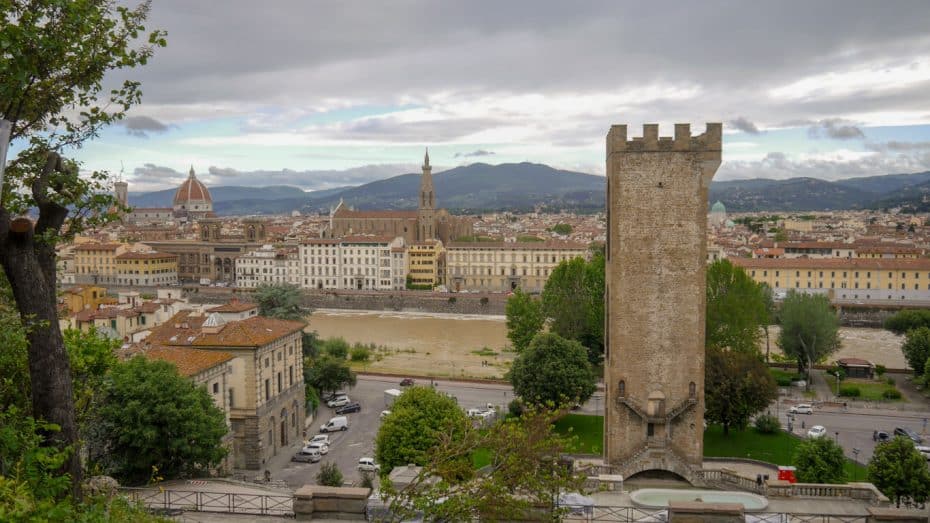
Piazzale Michelangelo is known for its stunning panoramic views of Florence. It’s slightly removed from the city center, offering a quieter atmosphere.
-
Why is this the best area to stay in Firenze:
- Stunning panoramic views of Florence
- Iconic statue of David replica
- Rose Garden nearby
- Historic city center accessibility
- Sunset viewing point
Piazzale Michelangelo, located on a hill in the Oltrarno district of Florence, offers panoramic city views. Designed by architect Giuseppe Poggi in 1869, this square was part of a comprehensive urban renewal project during the reign of King Victor Emmanuel II.
Built as a tribute to the Renaissance master Michelangelo, the piazza features bronze replicas of some of his most famous works, including David and the Medici Chapel sculptures from San Lorenzo. The central statue is an imposing replica of David, encircled by allegories representing day and night as well as dawn and dusk.
The elevated location provides an expansive view that includes key landmarks such as the Duomo, Palazzo Vecchio, Ponte Vecchio, and the Basilica of Santa Croce. The Arno River can be seen flowing through Florence, adding to the scenic beauty.
Accessibility to Piazzale Michelangelo is straightforward. The easiest way to reach it is by bus lines 12 or 13 from the city center. For those preferring to walk, a trek up from Piazza Poggi through the Rampe del Poggi offers a lovely hike surrounded by landscaped gardens.
Best Hotels near Piazzale Michelangelo, Florence
4. Santo Spirito
A vibrant but less crowded than tourist-heavy areas
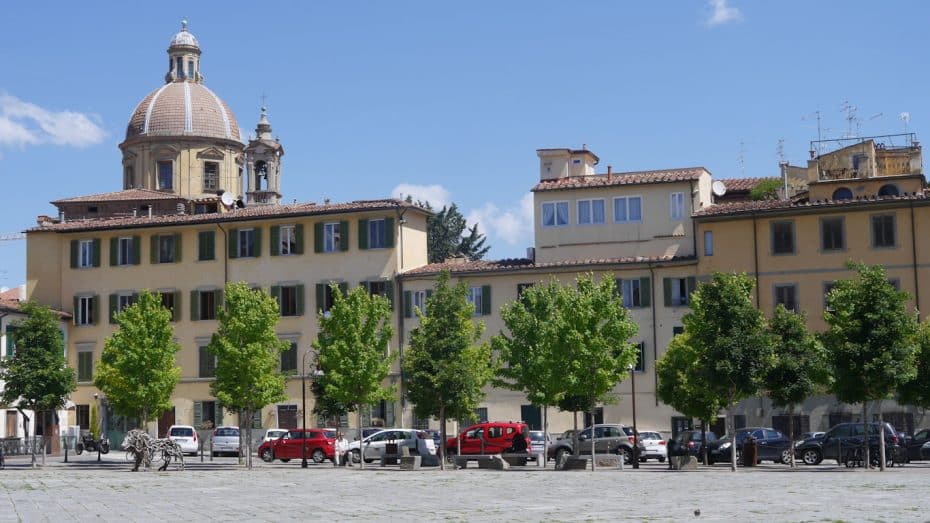
Santo Spirito has an artistic flair with its independent shops, cozy cafes, and frequent markets.
Situated on the southern bank of the Arno River, Santo Spirito is famous for its picturesque Piazza Santo Spirito, which has historically been a social and commercial hub. Basilica di Santo Spirito is a Renaissance masterpiece designed by Filippo Brunelleschi and completed in 1481. The basilica’s interior features significant works of art, including pieces by Michelangelo.
Santo Spirito is also home to Palazzo Pitti, an expansive Renaissance palace hosting multiple museums and galleries. Originally built in the 15th century for the Pitti family, it was later acquired by the Medici family. The adjacent Boboli Gardens are an important attraction offering landscaped lawns, sculptures, and fountains dating back to the 16th century.
The area’s nightlife revolves around local trattorias, bars, and cafés that line the streets and piazzas. The local food market at Sant’Ambrogio is another highlight in the area.
Several bus lines connect the area to other parts of Florence. Additionally, Santo Spirito is conveniently situated within walking distance of some of the city’s main attractions across the river.
Best Hotels in Santo Spirito, Florence
5. San Lorenzo
Great area for food lovers
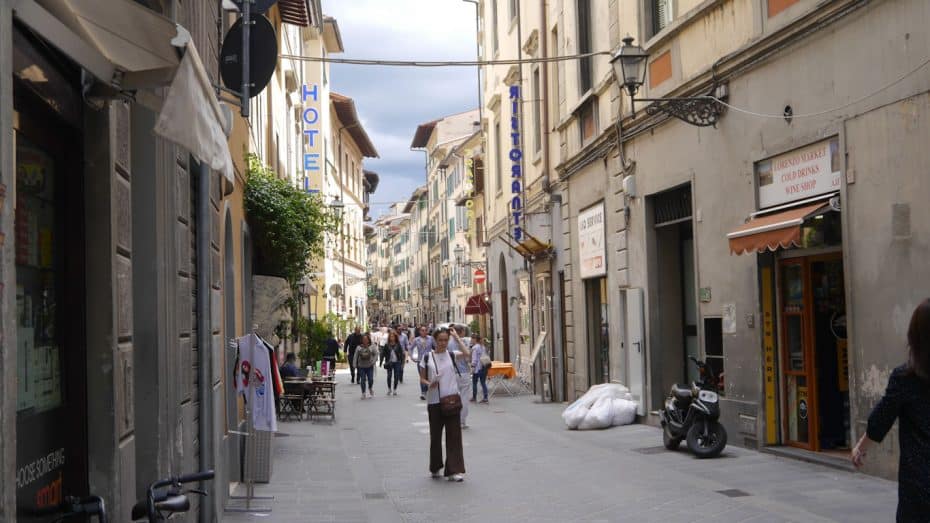
San Lorenzo is known for its famous market and numerous dining options.
San Lorenzo is a central and historic district. Named after its iconic basilica, the Basilica di San Lorenzo, this area is closely linked to the powerful Medici family. The basilica dates back to 393 CE, when it was initially consecrated. Filippo Brunelleschi, a key figure in Renaissance architecture, redesigned it in the 15th century, though it remains incomplete on the outside.
San Lorenzo is north of Florence’s Duomo and east of the main train station, Santa Maria Novella. It provides easy access to many of Florence’s notable landmarks. The bustling Mercato Centrale is one of the focal points of this district. The market offers two floors: the ground floor, mainly for fresh produce like meats, cheeses, and vegetables, and an upper floor housing numerous food stalls that serve traditional Tuscan dishes.
San Lorenzo also houses key Medici-related structures. Among them is the Medici Chapels (Cappelle Medicee), which serve as a mausoleum for the Medici family members. The interior features Michelangelo’s works. Additionally, Palazzo Medici Riccardi, constructed in the mid-15th century by Michelozzo for Cosimo de’ Medici, offers a glimpse into Renaissance architecture and houses a renowned fresco cycle, “The Journey of the Magi” by Benozzo Gozzoli.
The district maintains an active environment throughout the day and night. In terms of transport, San Lorenzo benefits from proximity to various bus lines and Santa Maria Novella station.
Best Hotels in San Lorenzo, Florence
6. Santa Croce
Best area for nightlife and young travelers
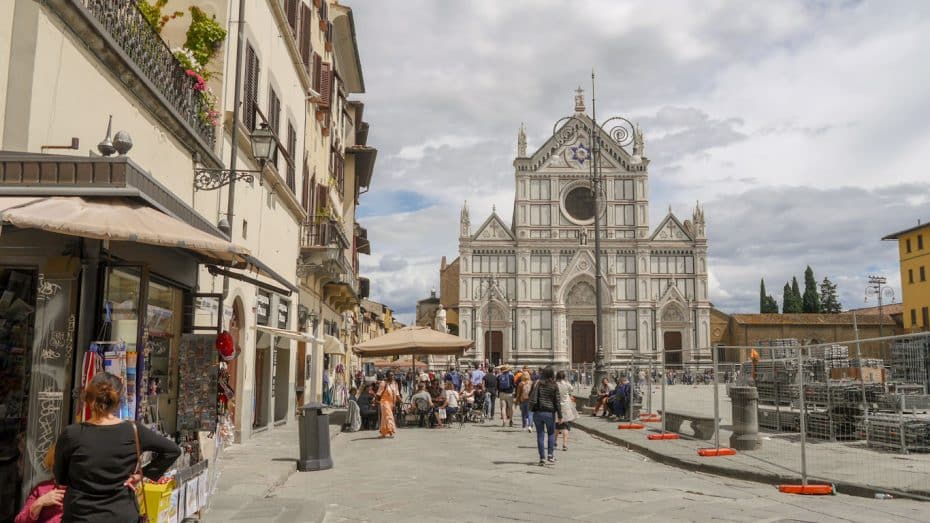
Santa Croce has plenty of trendy bars and restaurants, making it a lively area with a youthful vibe
Santa Croce is in the eastern part of Florence’s historic center. It derives its name from the Basilica di Santa Croce, a landmark built in the late 13th century. It is the final resting place for notable figures such as Michelangelo, Galileo, and Machiavelli.
Walking through Santa Croce offers an immersion into Florentine history. The Piazza Santa Croce is a lively square where medieval architecture meets open space for events and local gatherings. Annually, this piazza hosts the Calcio Storico Fiorentino, a historical football game dating back to the 16th century.
The district features several key attractions beyond the basilica. The Museo dell’Opera di Santa Croce showcases sculptures, paintings, and artifacts connected to the church’s history. Nearby, Casa Buonarroti provides insights into Michelangelo’s life and features his early works.
Santa Croce also includes significant markets and artisan shops. Mercato di Sant’Ambrogio is a local market offering fresh produce, meats, cheeses, and prepared foods, reflecting traditional Tuscan cuisine. The area around Via dei Neri is also notable for small shops selling handcrafted leather goods and jewelry.
Santa Croce’s nightlife is varied, with numerous bars and traditional osterias offering Tuscan wines and regional dishes. Local musicians often perform live in some of these venues.
Santa Croce’s proximity to major bus lines makes transportation easy. While there is no metro system in Florence, bus lines C1 and C3 provide efficient transit options.
Best Hotels in Santa Croce, Florence
7. San Marco – Santissima Annunziata
Home to the Accademia Gallery & Michelangelo’s David
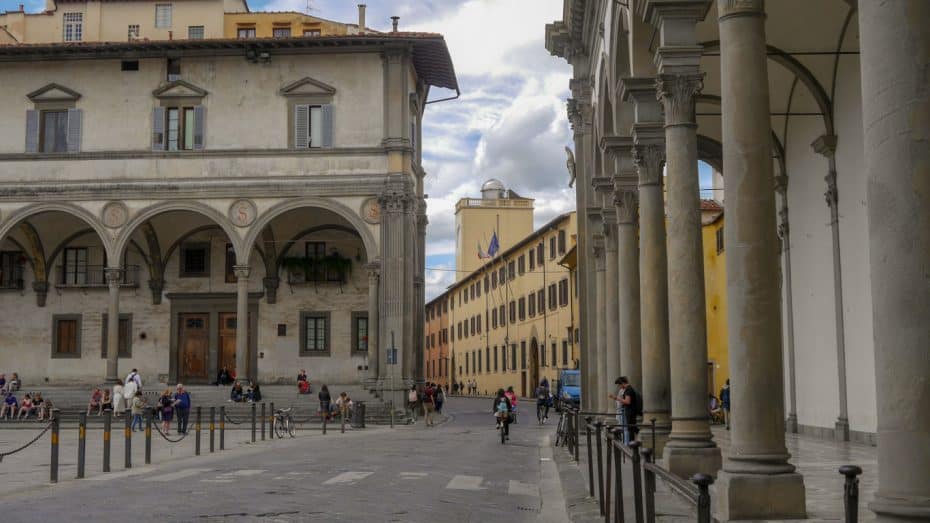
San Marco – Santissima Annunziata is quieter compared to the main tourist hubs but still offers great access to cultural landmarks.
San Marco – Santissima Annunziata, located in northeastern Florence, offers a fascinating blend of history, art, and architectural beauty. The area centers around the Piazzas San Marco and Santissima Annunziata.
The Piazza San Marco is home to the Church and Museum of San Marco, established in the 15th century, and features works by Fra Angelico. This square also serves as a bustling hub featuring markets and street vendors. Nearby, the Accademia Gallery houses Michelangelo’s David, an iconic masterpiece attracting numerous art enthusiasts.
Piazza Santissima Annunziata is another district highlight. It features the Basilica della Santissima Annunziata, originally constructed in the 13th century with later Baroque additions. This piazza also showcases Brunelleschi’s architectural prowess with the Ospedale degli Innocenti, an early example of Renaissance architecture.
The area offers numerous dining options, from traditional Florentine trattorias to modern cafes. The nightlife here includes small cocktail bars and clubs.
Transportation within San Marco – Santissima Annunziata is well-served by bus lines that connect it to other parts of Florence. The main bus routes include lines 1, 6, and 14.
Best Hotels in San Marco – Santissima Annunziata
8. Campo di Marte
A quiet area to stay in Florence
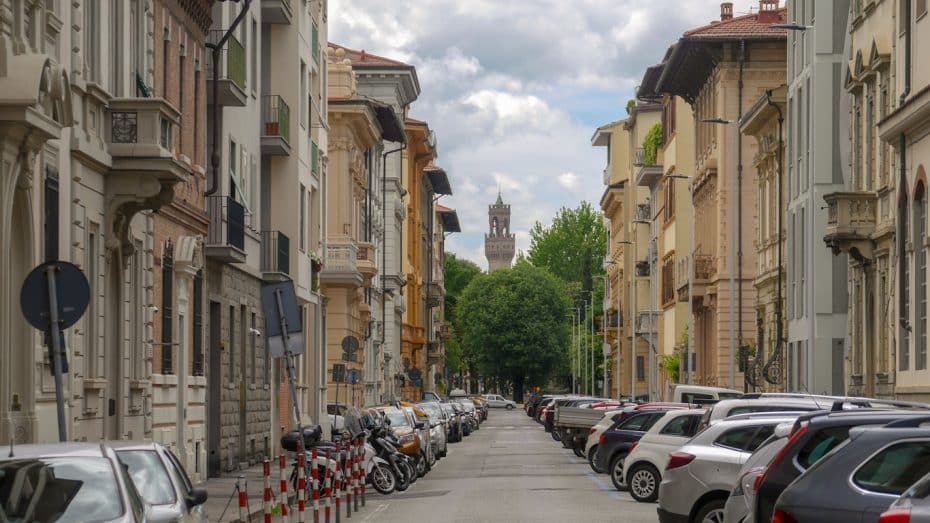
Although it’s further from the main historic center, Campo di Marte is perfect for those who prefer a quiet atmosphere
Campo di Marte is located in the northeastern part of Florence. Known for its spacious parks, sports facilities, and residential atmosphere, it’s situated away from the city’s more tourist-heavy areas, making it an attractive option for a quiet stay. The area is named after the Roman god of war, Mars.
One of the major highlights of Campo di Marte is the Stadio Artemio Franchi. Opened in 1931 and named after a former president of the Italian Football Federation, this stadium serves as the home ground for ACF Fiorentina, Florence’s premier football club. The stadium is a hub for football games and hosts various events and concerts throughout the year.
Adjacent to the stadium is the Nelson Mandela Forum, a large multi-purpose indoor arena that hosts sporting events, concerts, and exhibitions. Opened in 1985 and named after the South African leader, it is one of Florence’s key venues for large-scale cultural activities.
Campo di Marte offers several attractions for those interested in art and culture, such as Villa Favard. Built in the 19th century for Baroness Fiorella Favard de l’Anglade, this elegant structure now houses a music school and hosts occasional concerts within its lush gardens.
Campo di Marte does not lack green spaces; one notable example is Parco della Mensola. This extensive park provides plenty of trails for walking or running and features picturesque views over Florence.
Transportation in Campo di Marte is convenient. Its own railway station—Firenze Campo di Marte—provides easy access to regional and national train services. Public bus services offer routes connecting it efficiently to other parts of Florence, including the city center, which is approximately 2.5 kilometers (1.5 mi) away.
Best Hotels in Campo di Marte, Florence
Where to Stay in Florence, Italy: A Personal Take
During my recent visit to Florence, I found that choosing accommodation in the City Center, or Centro Storico, was a smart decision. This central location meant I was within walking distance of most attractions. I stayed at Hotel Delle Camelie, a three-star hotel, and had a comfortable and convenient stay. The rooms were clean, the staff was friendly, and the atmosphere was pleasant.
The City Center is filled with history, stunning architecture, and numerous sites to explore in Florence. Hotel Delle Camelie is close to popular landmarks such as the Ponte Vecchio Bridge and the Uffizi Gallery. In addition to these famous attractions, Florence’s City Center is home to small museums, quiet streets worth wandering through, and many delicious cafes. With so much to see within a short radius of Hotel Delle Camelie, selecting accommodation in this region of Florence can make for an enjoyable travel experience.
Accommodation in Florence: Useful Information
Florence, the capital of Italy’s Tuscany region, is easily accessible by train from major cities like Rome and Milan. The main train station, Santa Maria Novella, is in the city center.
Florence is relatively small and easy to navigate. It’s predominantly walkable, with narrow streets full of historical landmarks. Public transportation includes buses and trams, with the T1 tram line being particularly useful for tourists as it connects key parts of the city.
Local food in Florence is a treat. Don’t miss out on the famous Florentine steak (Bistecca alla Fiorentina) and ribollita, a hearty vegetable soup. For dessert, try cantuccini with vin santo, almond biscuits dipped in sweet wine.
Florence has a mild climate but can experience hot summers. Summers can reach up to 35°C (95°F), spring and fall see temperatures around 20°C (68°F), while winter temperatures can drop to around 5°C (41°F). Light layers are recommended for variable spring and fall weather.
The Uffizi Gallery is a must-visit due to its incredible Renaissance art collection. Other noteworthy attractions include the Cathedral of Santa Maria del Fiore (the Duomo), the Ponte Vecchio bridge, and Pitti Palace with its stunning Boboli Gardens.
Staying near the Duomo offers convenience and proximity to major sites. The Oltrarno area is less touristy but full of artisan shops and local restaurants. For budget travelers, Santa Croce offers diverse options and vibrant nightlife.
To save money on accommodation, consider staying in guesthouses or hostels instead of hotels. Booking in advance can also yield better rates.
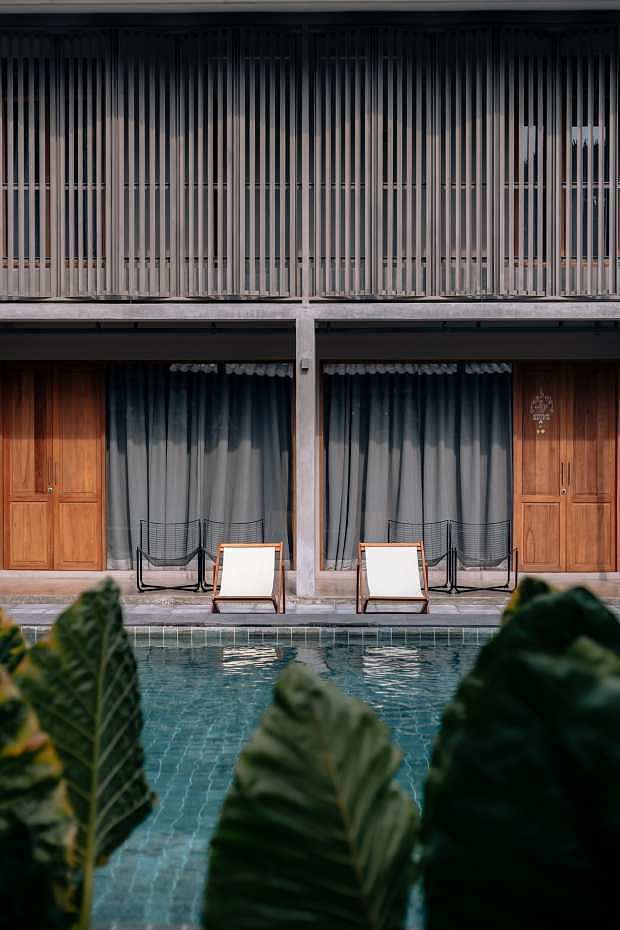
Other Accommodation Guides
- Best areas to stay in Pisa
- Best areas to stay in Cinque Terre
- Best areas to stay in Milan
- Best areas to stay in Turin
- Best areas to stay in Genoa
- Best areas to stay in Rome
- Best areas to stay in Bologna
- Best areas to stay in Venice
- Best areas to stay in Bari
- Best areas to stay in Naples
- Best areas to stay in Capri



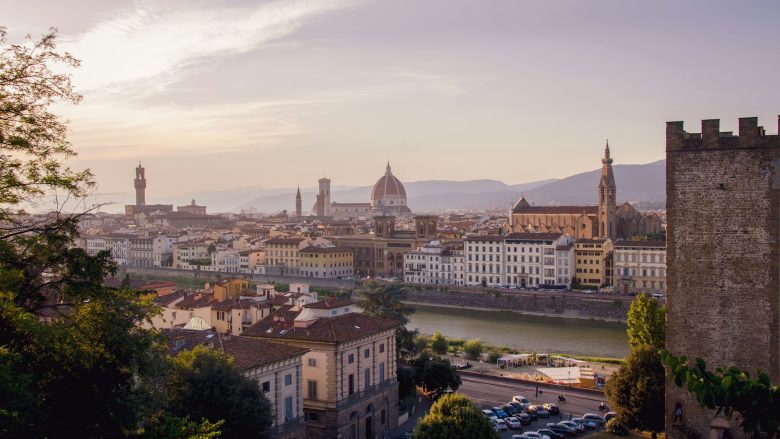
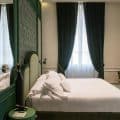


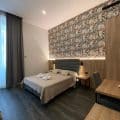
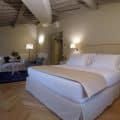
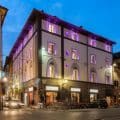
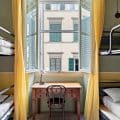

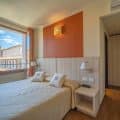


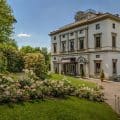
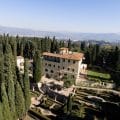

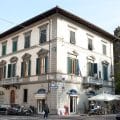
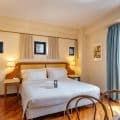



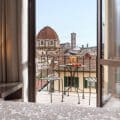
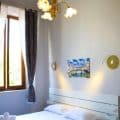
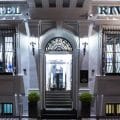
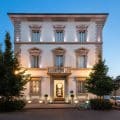

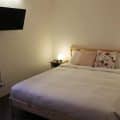
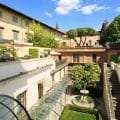
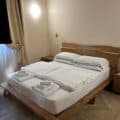
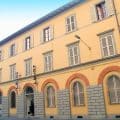


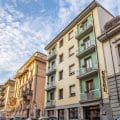

















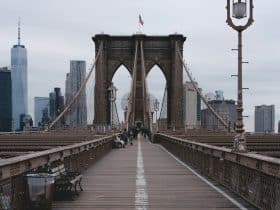
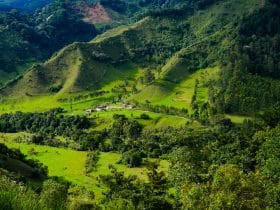

Leave a Reply
View Comments